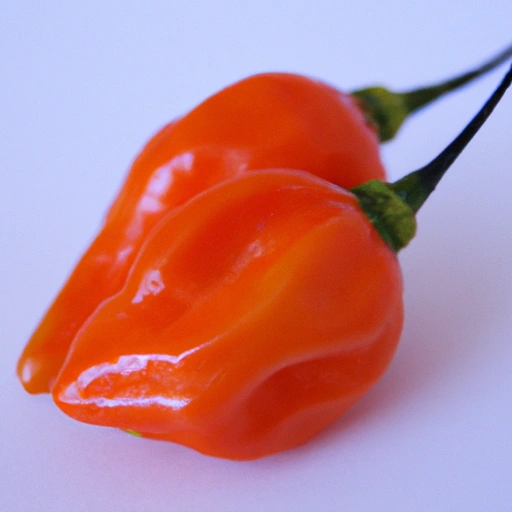Habanero
Description

The habanero is a type of chili pepper known for its fiery heat and fruity, floral flavor. It is small and lantern-shaped, ranging in color from green when unripe to orange, red, or even pink when mature. The heat level of a habanero can range from 100,000 to 350,000 Scoville Heat Units (SHU), which makes it one of the hotter peppers available to consumers. As an ingredient, it is often used to add a spicy kick to dishes, but should be handled with care due to its intensity.
Common uses
Habaneros are commonly used to make hot sauces, salsas, and marinades. They can also be found in spice blends, dry rubs, and as a condiment in its raw or cooked form. Due to their intense heat, habaneros are often used sparingly to avoid overpowering dishes.
Nutritional value
Calories
One habanero pepper (about 14g / 0.5 oz) contains approximately 18 calories.
Protein
Each pepper provides roughly 0.8 grams of protein.
Fat
Habaneros are naturally low in fat, with less than 0.2 grams per pepper.
Carbohydrates
Each pepper has about 4 grams of carbohydrates, primarily from natural sugars and dietary fiber.
Vitamins
Habaneros are rich in Vitamin C and also contain small amounts of Vitamins A and B.
Minerals
They provide minerals such as potassium and magnesium in small quantities.
Health benefits
The capsaicin in habaneros has been linked to health benefits such as pain relief, reduced inflammation, and potential metabolic benefits. Their high Vitamin C content also supports immune system function.
Potential risks
Consuming habaneros can cause mouth and skin irritation, stomach discomfort, and in extreme cases, can exacerbate gastrointestinal conditions. It's important to handle them with care to avoid contact with eyes and sensitive skin.
Common recipes
Habanero peppers are frequently used in Caribbean, Latin American, and Southwestern American cuisine. They are integral to recipes such as jerk chicken, hot sauces, and spicy salsas.
Cooking methods
Habaneros can be used fresh, dried, or smoked and are often roasted, grilled, or sautéed to enhance their flavor.
Pairing with other ingredients
The fruity undertone of habaneros pairs well with tropical fruits like mango and pineapple, as well as with sweet ingredients that help balance their intense heat.
Summary
Habaneros are a vibrant and spicy ingredient that bring both heat and flavor to dishes around the world. Despite their potential risks, including their intense heat and ability to irritate, habaneros offer significant culinary versatility and health benefits. Their historical journey from the Americas to kitchens worldwide is a testament to their enduring appeal and influence in global cuisine.